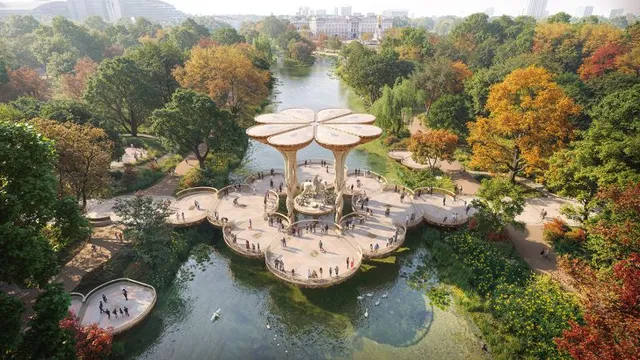
Public votes on designs for Queen Elizabeth II's memorial in London
2025-05-09 00:00- Five proposed designs for the national memorial to Queen Elizabeth II have been finalized.
- The memorial will be located in St James's Park and aims to engage the public's feedback.
- The initiative signifies a commitment to commemorating the Queen's remarkable contributions to the nation.
Express your sentiment!
Insights
In the United Kingdom, a final shortlist of five proposed designs for a national memorial to Queen Elizabeth II has been revealed. This initiative was driven by the government to honor Britain's longest-reigning monarch, who passed away in September 2022 at the age of 96. The memorial is set to be constructed in St James's Park, which is located close to Buckingham Palace, and the public is invited to provide feedback on the proposed designs. Notably, some designs feature the Queen riding a horse, reflecting her love for equestrianism. The memorial design concepts include a canopy of giant lily pads, a statue of the Queen, and proposals for landscaping the park. The submissions invite various artistic interpretations, with some focusing on traditional representations of the Queen, while others explore more experimental ideas. For instance, one proposal incorporates recordings of the late Queen's voice woven into the design, enhancing the memorial's personal connection to her legacy. The construction of the memorial is estimated to cost between £23 million and £46 million, depending on the chosen design, and the selected design will be announced in the summer of 2025. The public consultation is expected to close on May 19, giving citizens an opportunity to express their views about the proposed ideas. This approach underscores the committee's initiative to engage the public in deciding how best to commemorate an extraordinary figure in British history. This memorial not only aims to serve as a tribute to Queen Elizabeth II's life and reign but will also contribute to community projects and facilities throughout the UK, following the legacy of past memorial initiatives. The committee, which is overseeing the selection of the design, includes Robin Janvin, the Queen's former private secretary, who is adamant about creating a landmark memorial to reflect the significance of the late monarch’s life and service to the country and the Commonwealth.
Contexts
St. James's Park, one of the Royal Parks of London, holds significant historical and cultural importance, serving as a site of remembrance and commemoration. Established in the early 1600s, it has undergone various transformations over the centuries, becoming renowned not just for its picturesque landscapes but also for the memorials that pay tribute to various facets of British history. These memorials, interspersed throughout the park, serve to honor significant individuals and events, providing a solemn reminder of the sacrifices made during times of conflict and celebrating the contributions of notable figures in society. The memorials within St. James's Park are a testament to the evolving narrative of national identity and remembrance in the UK. Among the most prominent memorials is the Victoria Memorial, erected in honor of Queen Victoria, which not only commemorates her reign but also represents the values of the British Empire during the 19th century. Other noteworthy memorials include the Horse Guards Memorial, which pays tribute to those who lost their lives while serving the country, specifically during both World Wars. These monuments are not only artistic structures but also historical artifacts, enabling visitors to engage with the narratives of courage, duty, and sacrifice embedded in British history. The significance of these memorials extends beyond mere aesthetics; they encapsulate the collective memory of the nation and serve as focal points for public gatherings and commemorative events. Annual observances, such as Remembrance Day, see large gatherings in St. James's Park where citizens pay their respects to those who served in conflicts. This participatory approach ensures that the memory of past events remains alive in public consciousness and fosters a sense of unity and collective reflection among the citizens. St. James's Park is more than just a recreational space; it is a living history that illustrates the relationship between landscape and memory. Visitors are not only able to enjoy the serene views, wildlife, and manicured gardens but also walk through a space deeply embedded with stories of national significance. The memorials in St. James's Park reflect the changes in societal values over time and highlight the importance of remembrance as a dynamic aspect of cultural heritage. As such, the park stands as an essential part of London's historical tapestry, inviting both local residents and tourists to engage with the past while appreciating the beauty of the present.